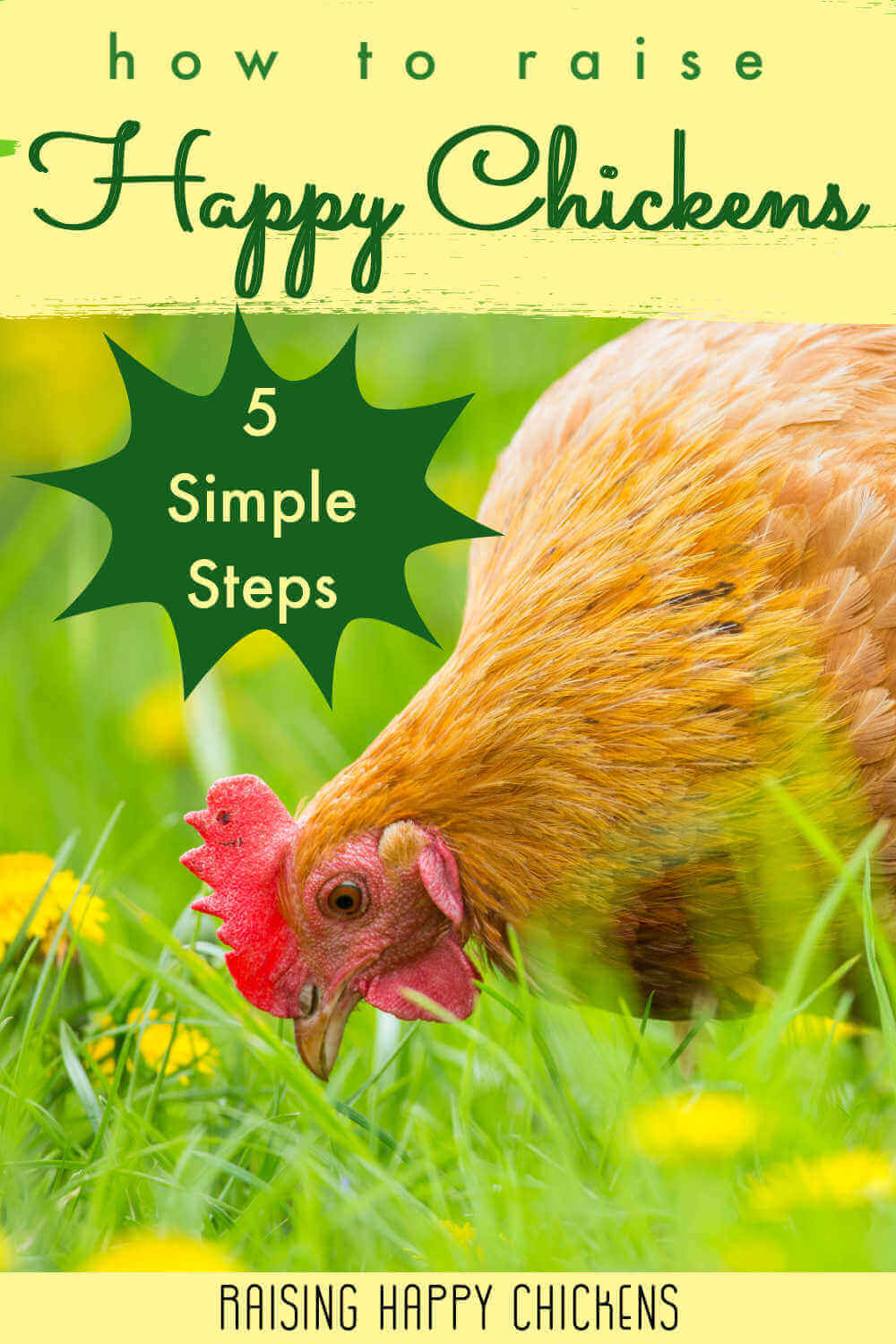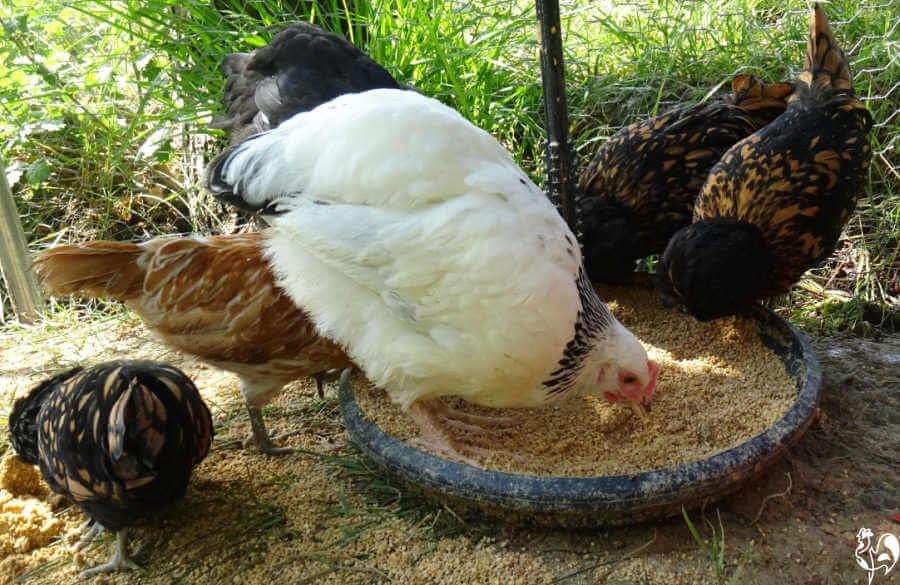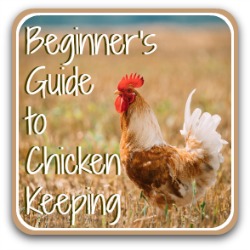- Home
- 5 starter steps
How to raise happy chickens (for beginners and beyond).
5 simple steps to raising happy, healthy chickens, based on globally adopted welfare standards.
Raising happy chickens isn’t difficult. It's all about meeting their simple needs with care, consistency, and a touch of kindness.
Whether you’re just starting with a small backyard flock or you've been keeping hens for years, understanding what makes them truly content is the key to a thriving, healthy coop.
In this guide, we'll explore five simple steps to raising happy chickens, based on internationally recognised welfare standards. These principles form the foundation of good chicken care everywhere, and they work just as well for a handful of hens in your garden as for larger flocks.
When your chickens are well-fed, comfortable, and secure, you’ll see the difference: glossy feathers, curious clucking, and confident foraging.
In short, you'll have genuinely happy chickens.
🪶 Featherlight Takeaways.
Quick insights from this article: especially helpful if you want a simple guide to what truly keeps chickens happy and healthy.
- Happy chickens are curious, relaxed, and active: all signs of a healthy, low-stress life.
- Their happiness rests on five simple needs: food and water, housing, health, space, and safety.
- These globally recognised welfare standards are easy to follow for any keeper.
- Small, thoughtful care habits make the biggest difference to both your flock and your peace of mind.
What is this guide based on?
The five steps in this guide are based on recognised global welfare standards, first introduced in European law and now widely adopted across the world.
Although these standards were written for commercial producers, they apply just as well to small backyard flocks, with a few simple adjustments.
They outline the five basic needs every chicken has for a safe, healthy, and happy life, and they form a perfect framework for anyone who wants to care for their flock to the highest possible standard.
Embracing these welfare needs for your own flock is straightforward, and will make sure they're being cared for to the highest possible standards.
The five welfare needs of happy chickens.
These five welfare needs form the heart of good chicken care. They're simple principles that guide everything from how we feed our flocks to how we protect them from harm.
Each section below gives a brief outline of one need, with links to more detailed guides on my website. Don't feel you have to read everything at once: bookmark this page and return when you need a refresher.
Pro Tip: The first article listed under each step (marked with "*") is the best starting point if you're short on time.
1. Provide adequate food and drink.
The first welfare need is simple but essential:
"Freedom from hunger and thirst by ready access to fresh water and a diet to maintain full health and vigour".
Chickens need different foods at each life stage to meet their changing nutritional needs. Failing to provide the right balance can lead to serious health problems.
In practice, this means...
- Keep a good quality, age-appropriate chicken feed available all day, stored safely away from rodents and wild birds.
- Provide grit at all ages if your flock eats anything other than feed alone, and add oyster shell for laying hens who need extra calcium.
- Make sure every chicken, even the lowest in the pecking order, has access to food and clean, fresh water at all times.
- Change water regularly, keep containers clean and, in cold weather, unfrozen.
Learn more about this step:
- * What to feed chickens at different life stages: an essential feeding guide.
- Grit and oyster shell: what your chickens really need.
- Choosing rodent-proof feeders: to keep food clean and safe.
- Water and waterers: what to use, and how to keep them clean and unfrozen.
- Baby chicks and hydration: how their needs differ from adults.
- Hot weather hydration: tips to keep your flock properly watered in the heat.
2. Provide a coop your chickens will be happy living in.
The second welfare need focuses on your flock's living conditions:
"Freedom from discomfort by providing an appropriate environment including shelter and a comfortable resting area".
A good coop keeps hens comfortable in all seasons, safe from harm, and able to behave naturally through roosting, nesting, and scratching about.
In practice, this means...
- Choose a coop large enough for every bird to move freely and roost comfortably.
- Make sure ventilation is good: it prevents ammonia build-up, keeps the air cool in summer and dry in winter.
- Provide flooring that's easy to clean and allows natural scratching behaviour.
- Perches should allow adequate space: at least 20 cm (8") per small breed or 25 cm (10") for larger hens, spaced 46 cm (18") apart so birds aren't sitting directly above each other.
- Offer at least one nest box per five hens: with clean, parasite-free bedding that encourages nesting.
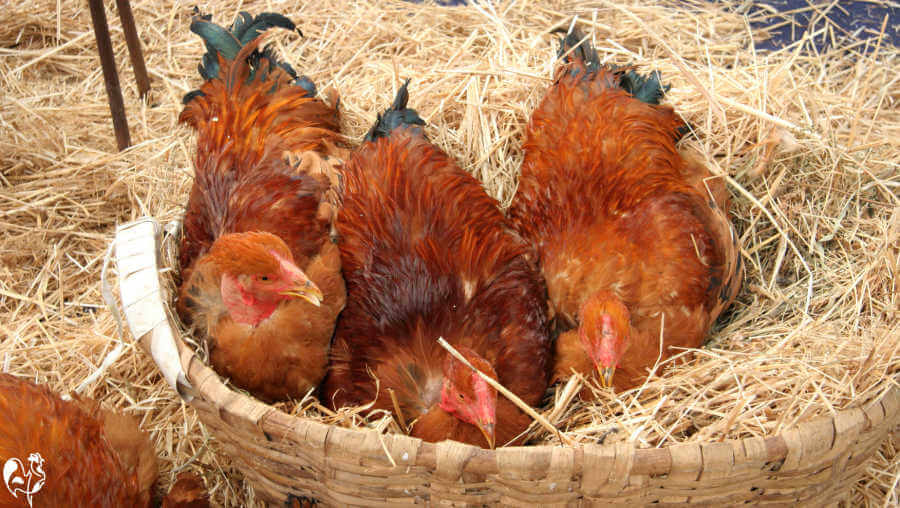 No matter how many nest boxes you have, they'll all want the same one!
No matter how many nest boxes you have, they'll all want the same one!Learn more about this step:
This is the most comprehensive section in the welfare needs documentation. It's impossible to cover anything like that level of detail here, but you'll find it all in these related articles.
- * The best chicken coop: which meets all welfare needs.
- Perches and roosts: how to get the space right.
- Nest box designs: assess which will work best in your specific situation.
- Nest box safety: how to make sure your hens feel safe enough to lay.
3. Keep chickens free from pain and disease.
The third welfare need is about protecting your flock's health:
"Freedom from pain, injury or disease by prevention or rapid diagnosis and treatment".
Chickens are good at hiding illness: it’s instinctive for prey animals. Early attention and consistent care make all the difference.
Preventing problems before they start is always easier than curing them later.
In practice, this means...
- Keep a close eye on your flock's behaviour, and examine individuals regularly, so that you can spot early changes. Something as simple as a hen sitting apart, a pale comb, or drooping wings may signal illness.
- Quarantine all new arrivals or sick chickens to prevent problems spreading to the rest of the flock.
- Practice good biosecurity: protect against rodents and wild birds, clean equipment, coops and runs, keep food and water disease free.
- Know your nearest avian vet before you need one, and have a plan for humane care if a chicken is ill and cannot recover.
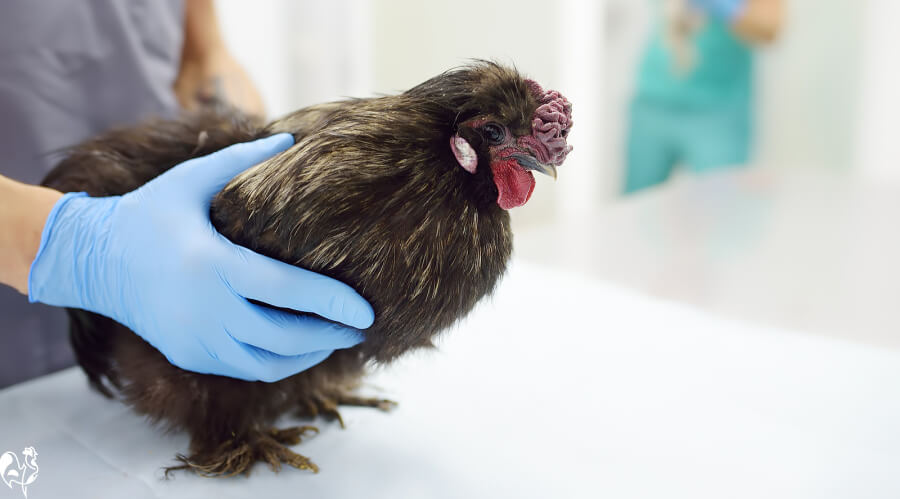 Know your nearest avian vet before you need them!
Know your nearest avian vet before you need them!Learn more about this step:
- * Naturally sourced vitamins and minerals to boost your flock's immune system.
- Biosecurity made simple: simple steps to keep disease out of your flock.
- Guard against rodents: ways to keep disease carriers at bay.
- Health problems by age: what to watch for and what to do.
4. Give chickens enough space, and something to do.
The fourth welfare focuses on how our chickens live and behave:
"Freedom to express normal behaviour by providing sufficient space, proper facilities and company of the animal’s own kind".
Space isn’t just about square metres. It’s about giving your flock room to move, explore, and interact. Chickens are social, curious birds who thrive when they can forage, dust-bathe, and rest together in safety.
In practice, this means...
- Allow at least one square metre (about 11 square feet) per chicken in the run. Large breeds need slightly more, bantams slightly less.
- Give access to the outdoors every day (from at least 9am for adults, later for chicks) so your chickens can stretch, scratch and socialise.
- Provide cover like trees, shrubs or artificial shelters to protect from from heat, wind, rain and overhead predators.
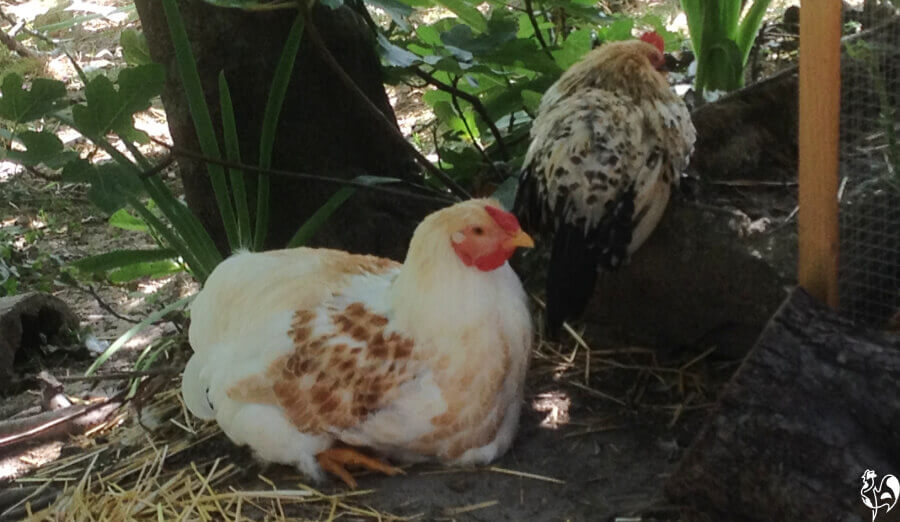 My chickens are lucky to have a huge fig tree which provides shade.
My chickens are lucky to have a huge fig tree which provides shade.- Keep run flooring well drained to avoid muddy areas which may harm feet and attract pests like mosquitoes and flies.
- Add "enrichment" to the run to prevent boredom and encourage natural behaviour. Simple examples are dust baths, logs or branches providing different perching opportunities, hanging vegetables or fun items like swings, peck toys and mirrors.
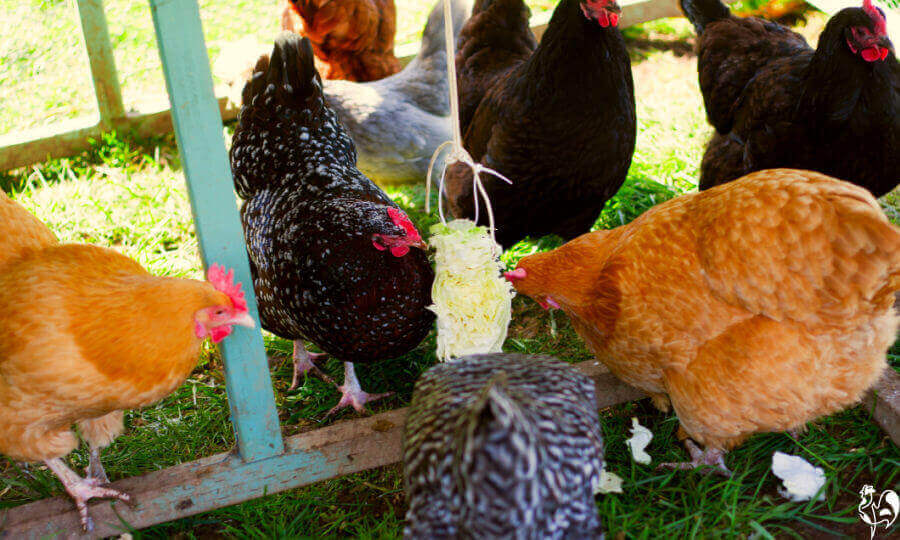 A hanging cabbage provides hours of fun!
A hanging cabbage provides hours of fun!Learn more about this step:
- * Chicken run basics: how much space your chickens need, and how to use it.
- Dust baths: what they are and how to create one your flock will love.
- Muddy runs: how to give your chickens a dry, safe place to roam.
- Boredom busters: fun ideas for a happier flock.
5. Keep chickens safe from predators and stress.
The final welfare need is all about protection:
"Freedom from fear and distress by ensuring conditions and care which avoid mental suffering".
Chickens feel safest when they're well protected, not only from predators, but also from loud noises, pets, or unfamiliar animals.
A secure environment helps them relax, lay better, and enjoy their daily routines.
In practice, this means...
- Use strong, predator-proof fencing high enough to stop climbers and buried at least 30cm (12") deep to deter digging animals.
- Check coop and run latches to make sure they're not accessible for predators like raccoons, and fencing for weak spota or signs of attempted entry.
- Cover runs (or part of a large run) with netting, tarpaulins or mesh where possible, to prevent both birds of prey and wild birds which can carry disease.
- Clear weeds and debris regularly, and remove any left-over food from the run. It can provide cover and act as a magnet for predators and vermin.
- Keep pets such as dogs and cats away from the coop and run. They may be family friends, but instinct can tempt them to do your chickens harm.
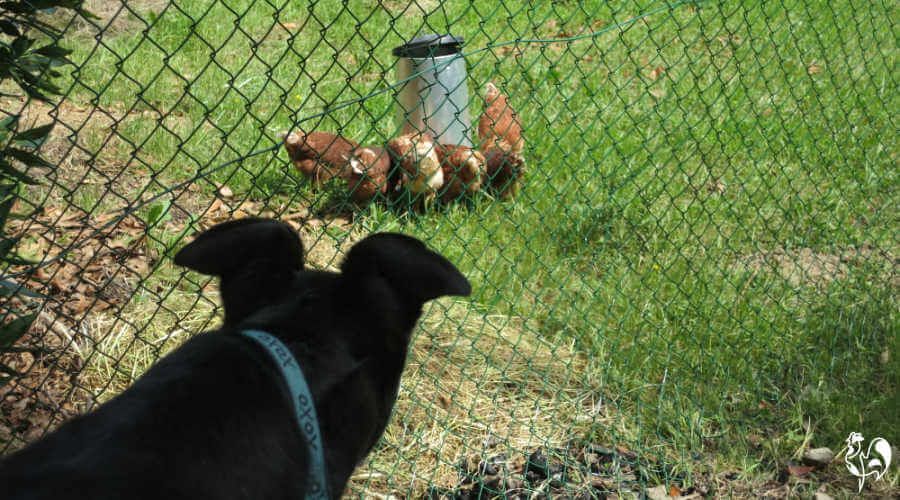 Our ex-racing greyhound, Nero, would love to "meet" the chickens!
Our ex-racing greyhound, Nero, would love to "meet" the chickens!Learn more about this step:
- * How to fence a chicken run: what works best?
- Bird flu: what it is, and how to protecting your flock during an outbreak.
- Predators: spotting the signs and protecting your flock.
- Rats in the coop: prevention and control.
6. The keeper's role in raising happy chickens.
The final element of the welfare standards focuses on the knowledge, skill, and empathy of us as their carers.
In practice, this means...
- Learn the basics of chicken biology and behaviour so you can recognise what's normal and what's not.
- Take time each day to observe your flock, and handle them gently and confidently so they stay calm and easy to manage.
- Develop patience and empathy. Happy chickens come from calm, consistent care.
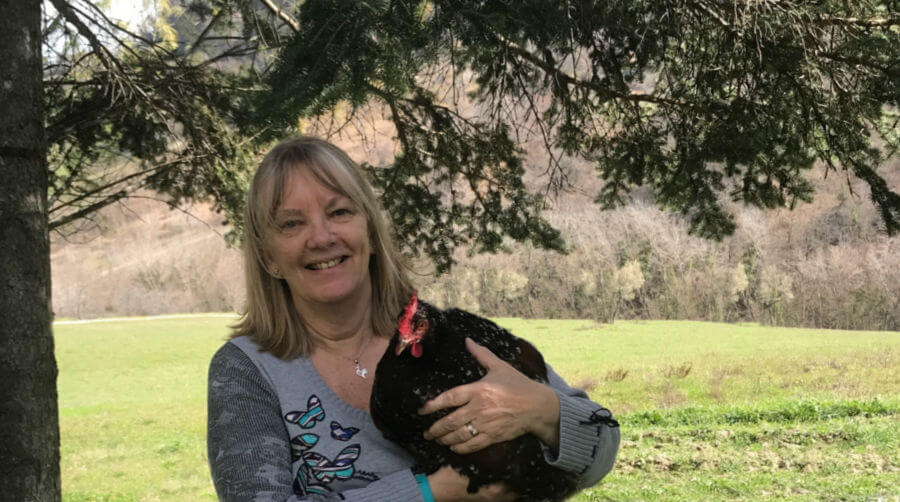
Frequently asked questions about keeping chickens happy.
What makes a chicken happy?
What makes a chicken happy?
Chickens are happiest when they feel safe, well-fed, and part of a calm flock. Space to forage, dust-bathe, and rest in comfort all help reduce stress and keep them content.
How can I tell if my chickens are stressed?
How can I tell if my chickens are stressed?
Look for behaviours like pecking at each other’s feathers, hiding away, or stopping laying.
If that's what you find, check for overcrowding, noise, predators, or changes in routine, and make sure food, water, shade and protection from predators are always available.
Do chickens like being petted or handled?
Do chickens like being petted or handled?
Some do, some don’t!
The key is gentle, confident handling. Move slowly, talk softly, and keep to a routine. That way, your flock will learn to trust you and will relax.
How much space do chickens really need in the run?
How much space do chickens really need in the run?
Aim for at least one square metre (about 11 square feet) per bird, more for larger breeds.
Extra space helps reduce pecking and keeps the flock calm and active.
What should I feed my chickens to keep them healthy?
What should I feed my chickens to keep them healthy?
Provide a complete, age-appropriate feed with constant access to clean water. Add grit, and oyster shell for laying hens.
Treats are fine but should be restricted to no more than 10% of their total diet.
Here's more information about raising happy chickens.
Sources.
A lot of "facts" you'll find on the internet are often people's individual views, based on inaccurate information repeated from poor quality sources.
The information I provide in this article and others is based not just on my own experience, but on evidenced facts from scientific, peer-reviewed research and books from highly respected and experienced poultry keepers such as Gail Damerow.
Some of the trusted sources I have used in this article are these.
1. European Union: Directive 1999/745: Laying hens. Pub. European Commission, Directorate General for Health and Food Safety, Animal welfare unit, 1999, updated.
2. UK Government, General Acts: Animal Welfare Act. Pub. 2006.
3. RSPCA: Welfare standards for laying hens. Pub. RSPCA, 2017 and updated annually.
4. UK Government, Department for the Environment, Food and Rural Affairs: Code of practice for the welfare of meat chickens. Pub. DEFRA, 2018.
5. American Humane Farm Program: Animal Welfare Standards for Broiler Chickens. Pub. 2019.
6. Australian Government, Department of Agriculture, Fisheries and Forestry: Australian Animal Welfare Standards and Guidelines for Poultry. Pub. 2022.
- Home
- 5 starter steps
